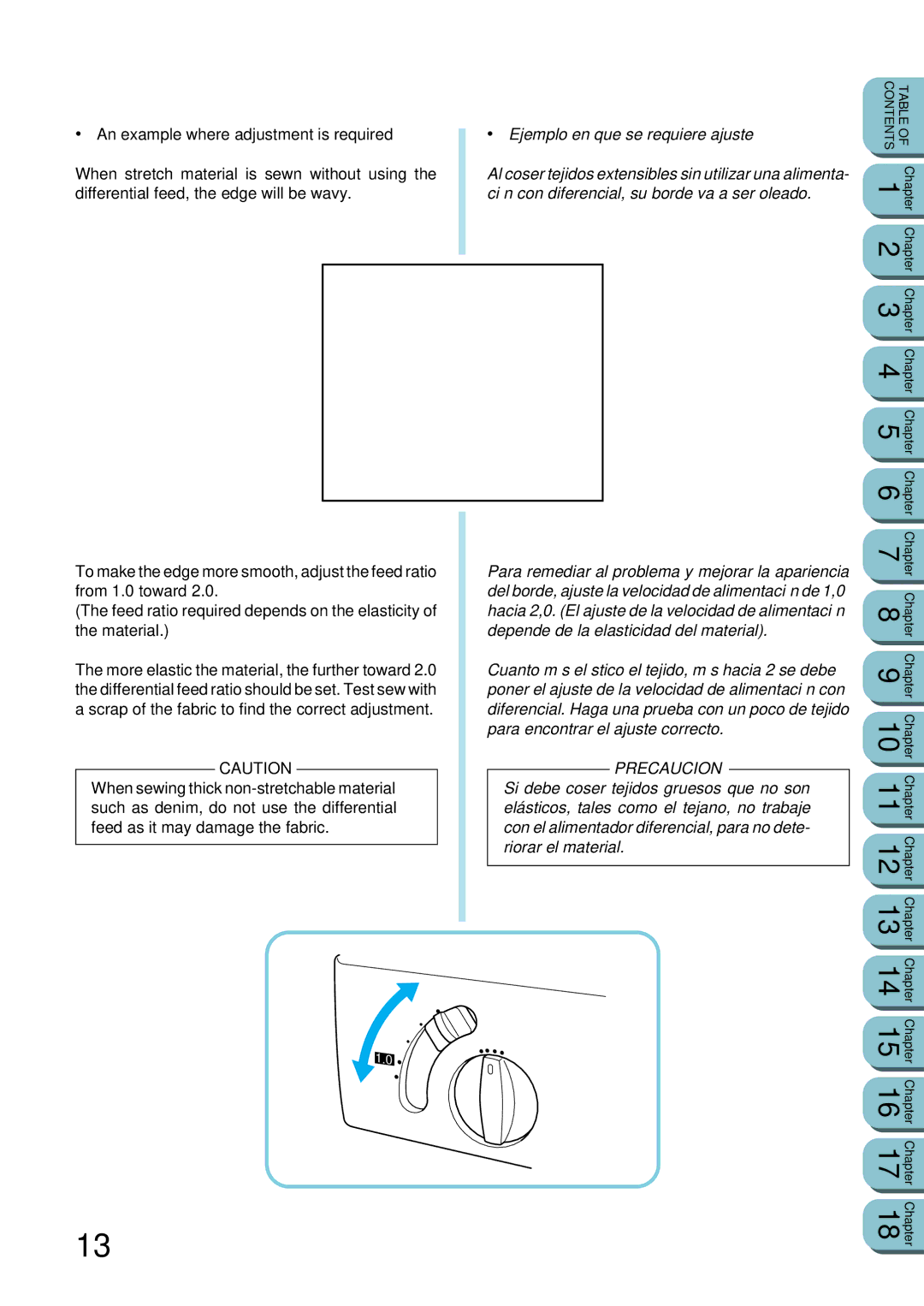UM 103D specifications
The Brother UM 103D is a versatile and user-friendly sewing machine designed to cater to both beginners and experienced sewers. This model blends simplicity with a range of features that allow for the creation of diverse sewing projects, making it an excellent addition to any sewing room.One of the standout characteristics of the Brother UM 103D is its lightweight and compact design. Weighing in at just a few pounds, this machine is easily portable, making it ideal for those who wish to take their sewing projects to classes or retreats. Its sleek design and bright color options also enhance its aesthetic appeal, attracting a wide range of users.
Equipped with a powerful motor, the UM 103D can handle various fabrics, from lightweight cotton to heavier materials like denim. It features adjustable stitch length and width, allowing users to customize their sewing experience according to project requirements. Additionally, the machine comes with a selection of built-in stitches, including essential utility stitches, decorative stitches, and stretch stitches, adding versatility to creative projects.
One of the technological advancements in the Brother UM 103D is its easy threading system. The machine is designed for effortless bobbin winding and threading, which is particularly beneficial for beginners who may find traditional sewing machines intimidating. The quick-set bobbin system helps reduce downtime, allowing users to spend more time sewing and less time on setup.
The Brother UM 103D also features a free arm design, which is perfect for sewing cylindrical items such as sleeves and pant legs. This design enhances accessibility and ease of working on complex projects. In addition, the machine is equipped with an automatic needle threader, simplifying the threading process and reducing eye strain.
For those who like to experiment with embellishments, the UM 103D supports a variety of presser feet, enabling users to perform tasks like quilting, zipper insertion, and buttonholing with ease. Its wide accessory package includes multiple presser feet, a seam ripper, and a variety of needles, making it a comprehensive package for sewing enthusiasts.
Overall, the Brother UM 103D is an excellent sewing machine that combines portability, ease of use, and advanced features. Its user-friendly design, solid construction, and range of capabilities make it suitable for a wide array of sewing projects, providing both new and experienced sewists with the tools needed to express their creativity.

